
Have you ever faced a situation where you’ve had to pick between two products and you related better to one of them? Maybe the product you didn’t pick was just as good. However, you still went by the product you had picked.
Why was that?
You were probably able to relate better with the product you picked. Hence, you chose the product. This is where brand personality comes into play.
For your business to thrive and to land plenty of customers, there’s only one secret. You have to connect with your customers. People are not drawn to companies. They are drawn to other people. They resonate with the personalities and interests of other people. For this reason, your company has to have a human element to it.
Brand personality is the aspect that makes your business human to the eyes of your customers. It refers to the human characteristics that define your brand.
For example, if Nike were a person, they would be an avid sportsperson. If Victoria’s Secret were a person, it would be a woman living in a mansion. Your brand has to make an emotional impact as emotions drive the decision-making process.
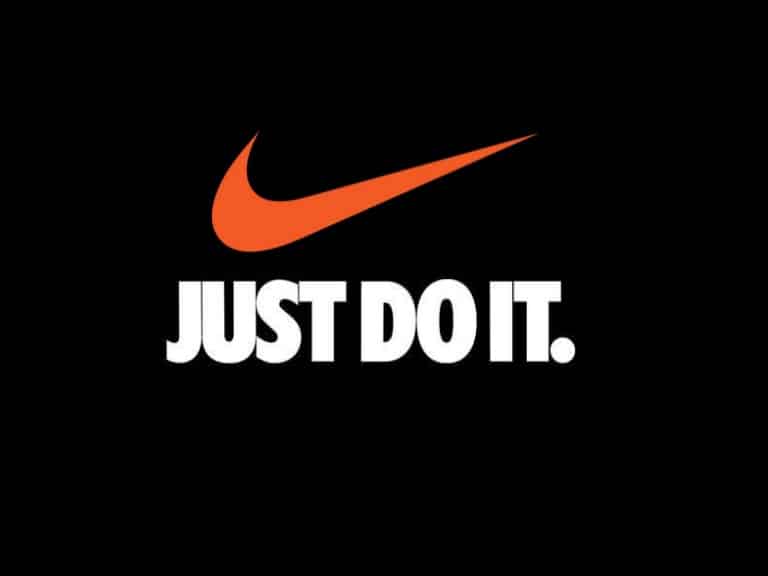

Apple would be the best example of having a sound brand personality. There are ample reasons as to why a Windows OS could be more beneficial than a Mac OS. However, customers stay loyal to Apple as it makes a statement on how the customers express themselves. So, understand your customer’s needs and craft your brand personality so that they are closely aligned.

Here’s the tricky part. Brand identity isn’t necessarily the same as brand personality. Your brand identity is the image that you showcase such as your logo, brand color palette, social media blogs, etc. In contrast, your brand personality has a much more emotional touch. Brand personality gives human characteristics to your brand.
However, brand identity must be a part of your brand personality. Both need to go hand in hand to maintain consistency.
Brand personality is really about personifying your brand such that it resonates with your core values as well as your customers. It is the primary factor that determines if your brand will be memorable or forgettable.
Around 77% of consumers buy from brands that they share values with. Most brands have some kind of personality, however, only a few brands have distinctive ones. If you aim to stay ahead on your lane, make sure that your brand has a personality. But, what’s all the hype about? Let’s take a look.
Once you’ve established a strong brand personality, your customers will associate with your brand even under the least likely circumstances. For example, an agency in Spain tried to depict that brands led with a strong personality are so strongly ingrained in our minds. They proved this concept by replacing the product.
Here’s their experiment with Marlboro. They had recreated Marlboro’s product as ear pods.

The agency had also recreated Heinz by changing its product representation to water bottles and containers of paint.

Even if both the product and the packaging are changed, our brain finds it difficult to comprehend the change and continues to see the old product in the new packaging. That’s the power of incorporating a brand personality.
People do not buy products, they buy brands. For example, people purchase an iPhone over an Android phone because they believe that it sets them apart from the crowd as a creative and non-stereotypical person.
On the other hand, purchasing a RedBull instead of any other energy drink might make them feel more energized because of the supercharging identity that the brand encompasses.
Let’s face it. Competitor brands are everywhere. Every day your customers scroll through social media and come across plenty of brands and plenty of information. If you want to break the noise, you need a differentiation strategy. When you define your brand’s personality traits and maintain a consistent brand voice, it gets easier for your customers to identify you.
Also, it’s more effective to let your brand speak for itself rather than telling people what your brand stands for. For example, Harley Davidson is a macho and rugged brand, but if they advertised with those same words, the message wouldn’t have been conveyed well.
No matter what your business goal is, the process begins with an idea to humanize your brand. Personality is what will differentiate you from your competitors. Your potential customers would find it easy to connect with a brand with personality compared to a faceless organization. Bringing your brand to life gives your brand a competitive edge over other brands.
Now, here’s the million-dollar question. We know that brand personality is important and that human characteristics are key to making your brand stand out. But, how can you find and build your brand personality?
When you identify and showcase your brand personality, you give your customers a strong reason to choose you. It is important to keep in mind that it should always reflect your target audience.
Here are the 3 frameworks that can help you determine your brand personality.
Aaker’s model works on the basis of dimensions that determine the nature of your brand. There are five main dimensions:
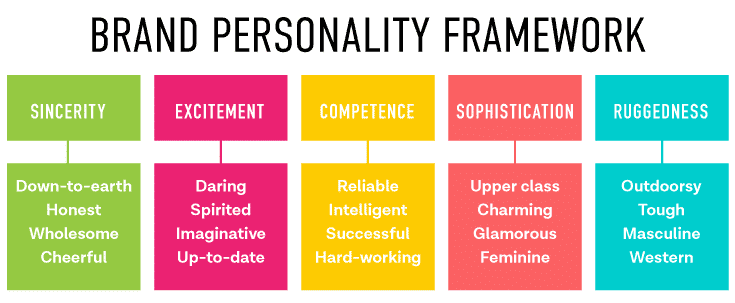
From these five dimensions, pick 3-5 which matches best with your brand’s personality. For example, if you are a virtual assistant, the key dimension you would want to pick is competence.
You could position yourself as sincere as well as sophisticated. Everything that you share and the way you present yourself to your customers should display these dimensions.
Here are some examples of different brands and their personalities designed by this framework.
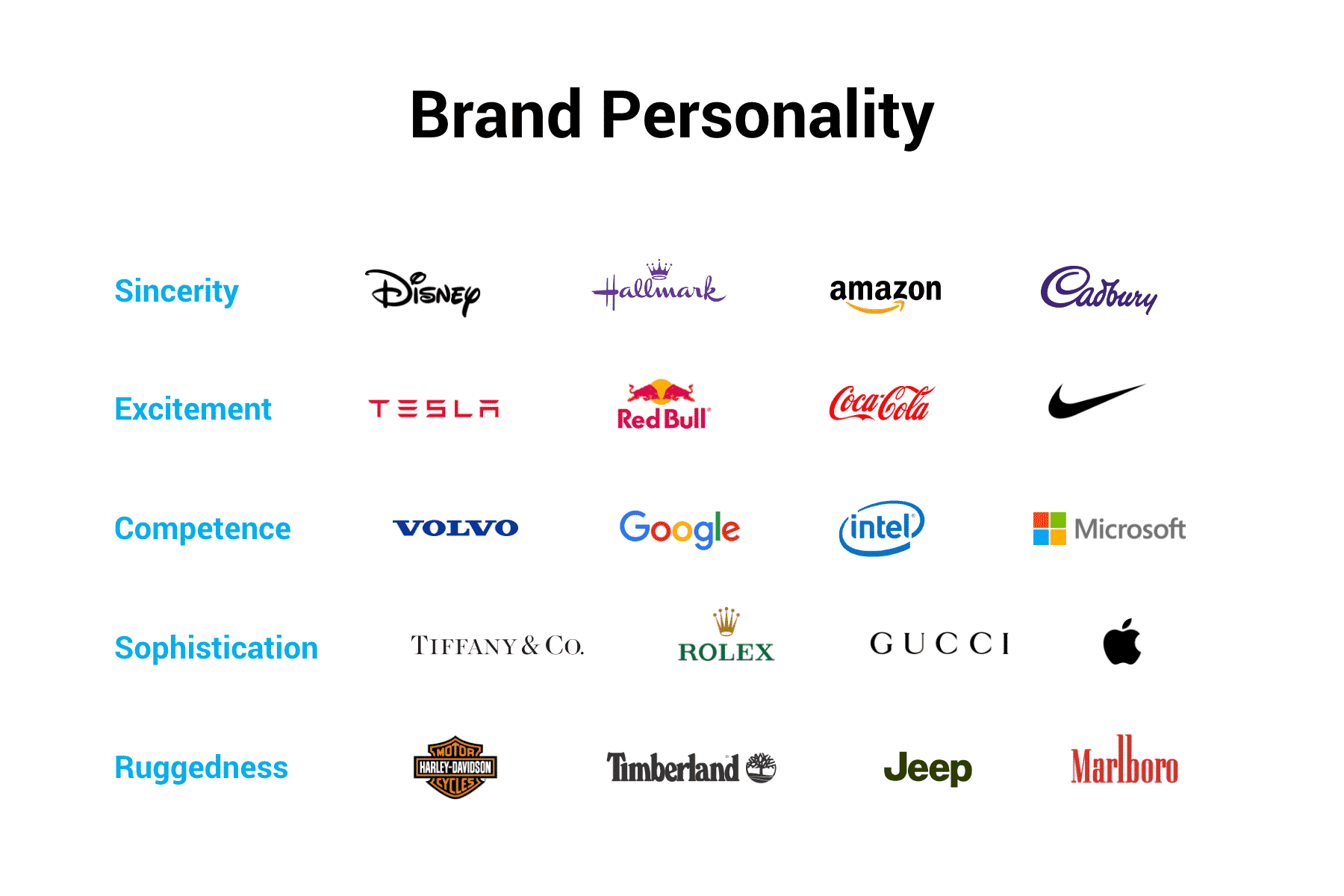
The next method that you could use to identify your brand’s personality is through symbolism. First, ask yourself which of the categories in the pinwheel below align the most with your prospective customers.
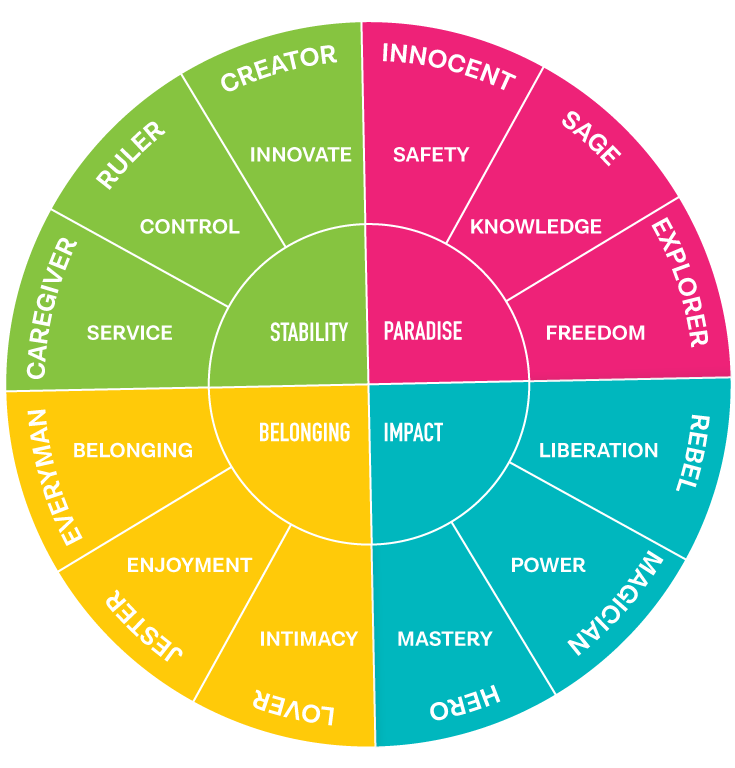
For example, let’s consider the renowned watch company, Rolex. They would identify as a “Ruler”. Their primary goal is to gain control and lead. Hence, they want their customers to feel more stable and organized with traits of responsibility and leadership.
The idea of combining the first two frameworks might have crossed your mind by now. The personality traits that align with your brand can be combined with the archetypes. Once you combine them, you will get a comprehensive understanding of how one needs to optimize.
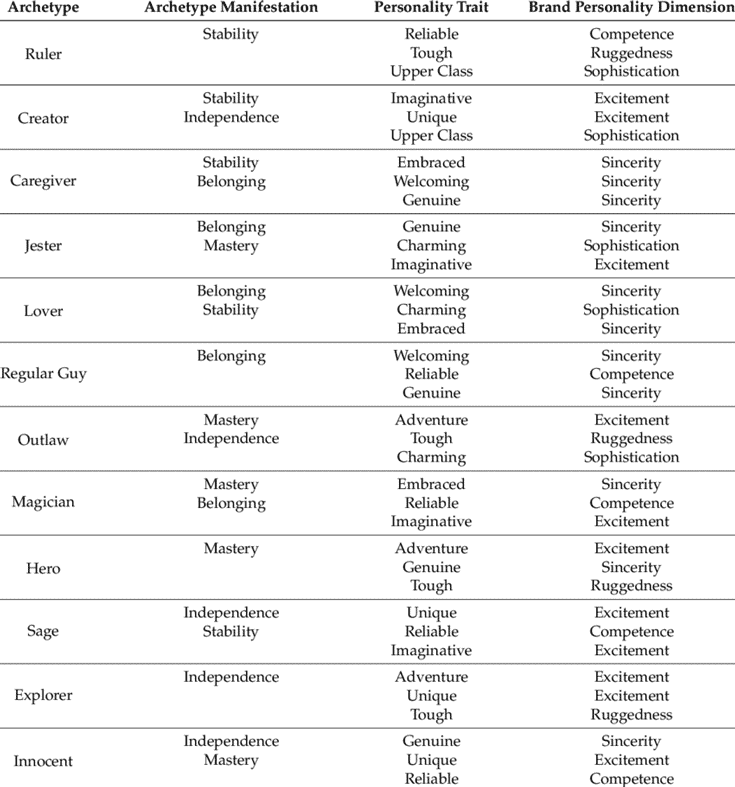
Finally, you have to remember that the aim of creating a brand personality is to humanize your brand. There is no right or wrong in your definition of your brand’s personality.
It all comes down to what your prospective customers are like. Customers who resonate with your brand will be drawn towards what you have to offer. The more authentic you are, the better your brand personality would be.